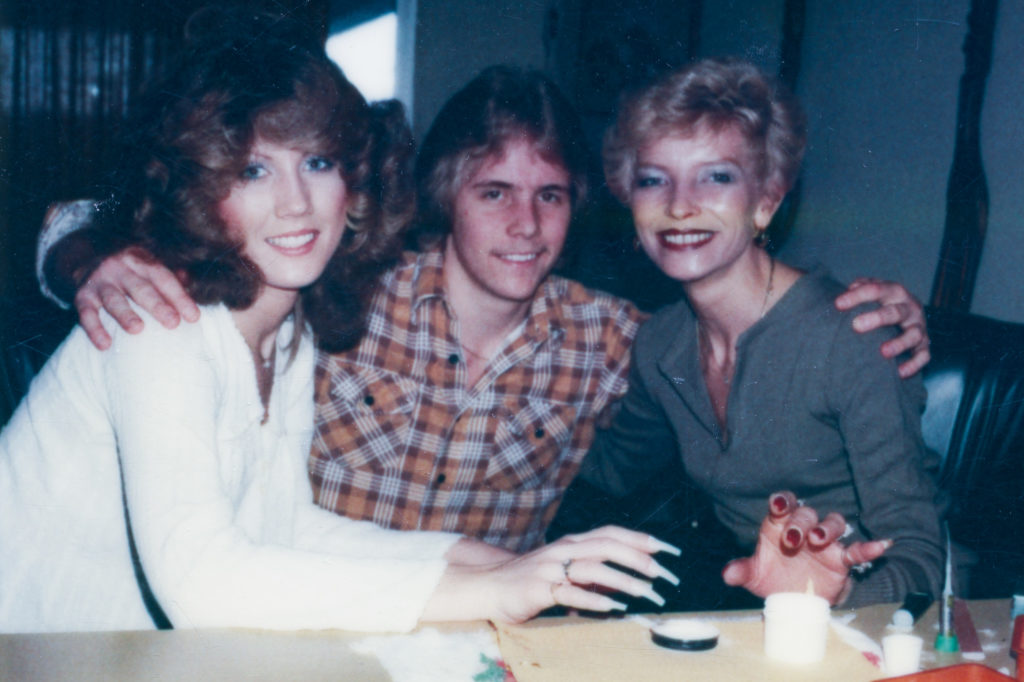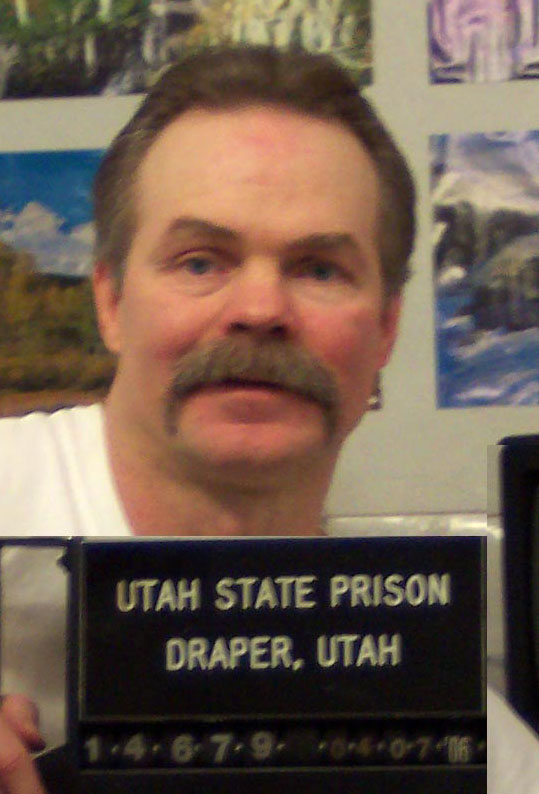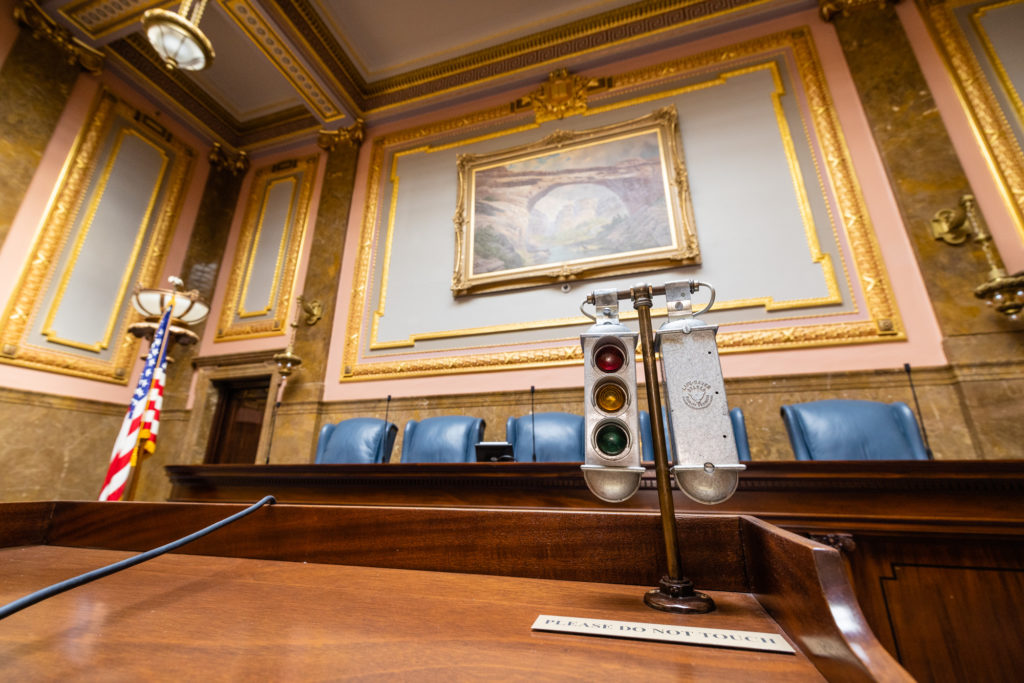Doug Lovell had a bad case of buyer’s remorse, at least in the eyes of the Utah Attorney General’s Office.
He’d pleaded guilty to the murder of Joyce Yost and received a sentence of death. Within weeks, Doug was asking to withdraw that plea and take his case to trial before a jury. The request languished nearly for two decades due to a convoluted series of procedural arguments and court decisions.

Which meant the death warrant signed by Utah 2nd District Court Judge Stanton Taylor on August 5, 1993 also remained in limbo.
To understand how Doug’s request to withdraw his plea went unresolved for so long, it’s important to have a bit of background on the events that led to Doug pleading guilty to capital murder.
Circumstances of Doug’s guilty plea
The guilty plea Doug Lovell entered came at the conclusion of months of discussion between his court-appointed defense attorney, John Caine, and prosecutors with the Weber County Attorney’s Office. By that point, Doug was aware South Ogden police had captured audio recordings of him admitting his guilt to his ex-wife, Rhonda Buttars.
The secret wire recordings and Rhonda’s likely testimony at an eventual trial made it unlikely Doug would be able to sway a jury into finding him not guilty of the murder. So, on June 17, 1993, Doug signed a memorandum of understanding stating he would lead police to Joyce Yost’s body. In exchange the prosecutors would not seek the death penalty.
That afternoon, Doug brought South Ogden police to a spot along the Old Snowbasin Road on the slopes below Mount Ogden and told them it was the site where he’d killed Joyce on the night of August 10, 1985.

Police began an intensive search but failed to immediately locate any indication of human remains at the site. The failure to locate Joyce’s body nullified the memorandum of understanding Doug had signed, meaning there was no plea deal in effect. Yet, when he returned to court for the beginning of jury selection in the case on June 28, 1993, he informed the judge he would still be changing his plea to guilty.
Judge Taylor agreed to delay sentencing for a month, providing additional time for police to search the mountainside for Joyce’s remains. The prosecutors promised to honor their original agreement and to not seek the death penalty, so long as the police search surfaced Joyce’s body prior to the sentencing hearing.
That did not happen.
Doug’s sentencing hearing began on July 29, 1993. At that time, Doug was presented a choice of either having a jury decide his sentence or Judge Taylor. Defense attorney John Caine had encouraged Doug to select the judge, suggesting that in his opinion Judge Taylor was unlikely to choose a sentence of death. Doug followed this advice.
On August 5, 1993, Judge Taylor sentenced Doug to die for the murder of Joyce Yost.
Doug Lovell’s request to withdraw
Doug sent Judge Taylor a letter on August 25, 1993, 20 days after receiving the death sentence. In it, he complained about the advice he’d received from his attorney, saying his preference had always been sentencing by a jury. He asked to fire John Caine. He also asked to withdraw his guilty plea and to instead stand trial.
John Caine was unaware of Doug’s letter to the judge. Five days later, he filed a formal appeal of Doug’s sentence. Because of delays in processing mail at the Utah State Prison, Doug’s letter did not arrive at the court until after the filing of the appeal.
At a later hearing, Judge Taylor granted Doug’s request to fire John Caine. The request to withdraw the plea was placed on hold, however, while the court sought new representation for Doug Lovell.
From there, the procedural history of Doug’s appeals grows increasingly complex. It can perhaps be best simplified by breaking it down into three phases, each punctuated by a decision from the Utah Supreme Court.
Three bites of the apple
The original direct appeal, from 1993 to 1999, primarily revolved around an argument of ineffective counsel on the part of John Caine. Among other things, Doug claimed his lawyer’s past relationship with one of the original prosecutors on his case, Reed Richards, had amounted to a conflict of interest.
The issue of Doug’s motion to withdraw his guilty plea was not raised in the direct appeal. Doug attempted to raise that issue with the court while the appeal was pending, but the trial court judge would not consider it, stating he’d lost jurisdiction when the appeal was filed.
The Utah Supreme Court heard oral argument on the original appeal and, on April 23, 1999, issued a decision affirming Doug’s conviction and sentence.
Rule 11
The second phase began in October of 2002, when Doug filed a renewed motion to withdraw his guilty plea. Here, for the first time, he claimed his 1993 guilty plea had not been made knowingly and voluntarily because Judge Taylor had failed to strictly follow what’s known as Rule 11.
Rule 11 is a portion of the Utah Rules of Criminal Procedure that spells out the rights judges are supposed to communicate to defendants when they plead guilty. The text of Rule 11 had changed a short time before Doug’s August, 1993 sentencing hearing and Judge Taylor had referred to the older, outdated version in his conversation with Doug at the time of his sentencing.
In his renewed motion to withdraw, Doug argued the judge’s error warranted a reversal of his plea.

A different judge, Michael Lyon, had by then taken over the case. Judge Lyon ruled against Doug, on the grounds the Utah Supreme Court in its 1999 decision had stated “all of Lovell’s claims fail.” Judge Lyon also said Doug’s original motion to withdraw had not been made within a 30-day window mandated by state law.
Doug appealed Judge Lyon’s decision and once again ended up before the Utah Supreme Court. He argued the 30-day clock should not have started from the date of his guilty plea, as Judge Lyon had contended, but instead from the date of his sentencing.
This is really about buyers remorse and this is exactly the thing or the kind of gamesmanship that we should be trying to avoid in the plea process.
Laura Dupaix, Assistant Utah Attorney General
In their May 27, 2005 decision, the high court justices sided with Doug. They ruled his original request to withdraw his guilty plea had been made in time and was still pending. Which meant Judge Lyon would need to consider the request on its merits.
Doug Lovell: Buyer’s remorse
Judge Lyon held an evidentiary hearing in November of 2005 and subsequently ruled the sentencing judge, Stanton Taylor, had properly complied with Rule 11. Even if he hadn’t, Judge Lyon said, the error hadn’t resulted in any prejudice to Doug.
Doug once again appealed to the Utah Supreme Court.

During oral arguments on February 3, 2009, Assistant Utah Attorney General Laura Dupaix said the entire debate amounted to regret on Doug’s part over his having received the death penalty.
“This is really about buyer’s remorse and this is exactly the thing or the kind of gamesmanship that we should be trying to avoid in the plea process,” Dupaix said. “His reason for pleading guilty was hoping to avoid it. And when he found out that he couldn’t avoid it and that he didn’t avoid it, that’s when he wanted to withdraw from this plea.”
Doug’s appellate attorney, David Finlayson, pushed back on that idea while pointing blame for the situation back at the courts.
“You’re going on this expedition of trying to figure out what was in the defendant’s mind back then,” Finlayson said. “This case should have been decided 15 years ago.”
The Utah Supreme Court issued a decision on Doug’s third appeal in July of 2010. It said Judge Stanton Taylor had failed to strictly follow Rule 11 by informing Doug of his rights to the presumption of innocence and the right to a trial by an impartial jury. As a result, Doug had good cause to withdraw his plea.
With that, the guilty plea was undone. Doug’s death sentence was vacated. He would receive the trial he’d long been asking for.
Hear how Joyce Yost’s family reacted when they learned Doug Lovell’s plea was withdrawn in Cold episode 10: Buyer’s Remorse
Episode credits
Research, writing and hosting: Dave Cawley
Audio production: Nina Earnest
Audio mixing: Trent Sell
Additional voices: Richie Steadman (as Doug Lovell)
Cold main score composition: Michael Bahnmiller
Cold main score mixing: Dan Blanck
KSL executive producers: Sheryl Worsley, Keira Farrimond
Workhouse Media executive producers: Paul Anderson, Nick Panella, Andrew Greenwood
Amazon Music team: Morgan Jones, Eliza Mills, Vanessa Rebbert, Shea Simpson
Episode transcript: https://thecoldpodcast.com/season-2-transcript/buyers-remorse-full-transcript/
KSL companion story: https://ksltv.com/463478/cold-a-prison-informant-reported-douglas-lovells-death-row-confessions-to-investigators-did-either-tell-the-truth/
Talking Cold companion episode: https://thecoldpodcast.com/talking-cold#tc-episode-10







